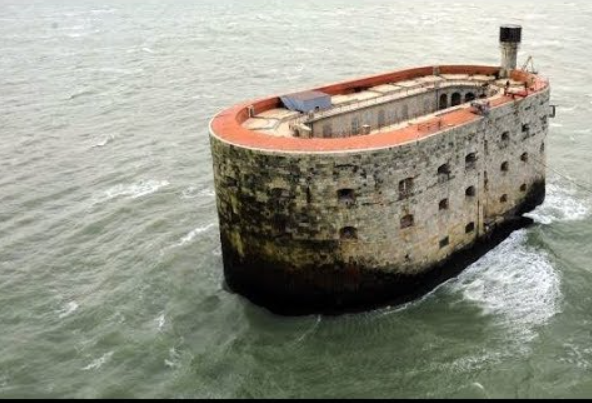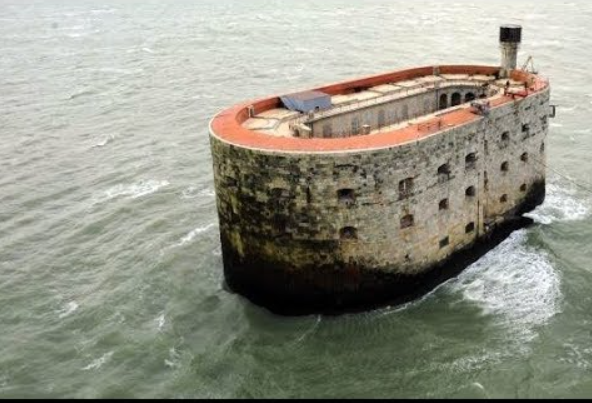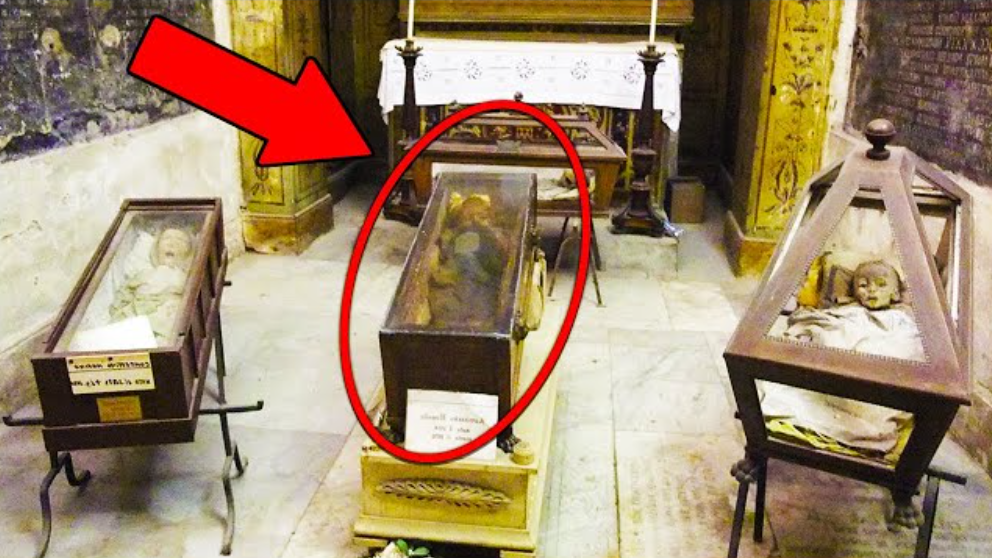
In the 17th century, protecting France from the formidable English naval fleets was of utmost importance.
This task proved to be exceptionally challenging, given that only the English Channel separated the two lands, and at its shortest gap, it was a mere 20 miles wide. Yet, for one architect, this challenge was an opportunity, and he embarked on a task that would span hundreds of years. When completed, it would stand as a remarkable testament to human ingenuity.

If you were to gaze out at the ocean between Île d’Aix and Île d’Oléron in France, you might notice what appears to be a tiny floating castle. Upon closer inspection, however, you would discover the truth. This small island castle is none other than the ancient structure known as Fort Boyard. Originally conceived to safeguard Charente and the harbor of Rochefort during the 17th century, it is a marvel of its time.
The idea behind Fort Boyard’s construction was to establish a base for the French Army under the rule of Louis XIV. Construction began in 1662, but it didn’t take long for the French to realize the immense cost and complexity of building something in the middle of the ocean. Consequently, they abandoned the project.
The King’s architect, known simply as Vauban, famously declared that building Fort Boyard would be nearly impossible, stating, “Your Majesty, it would be easier to seize the moon with your teeth than to attempt such an undertaking in such a place.” Nonetheless, the unfinished fort continued to occupy the minds of French military strategists as their conflicts with England persisted.
Finally, in 1801, Napoléon Bonaparte decided to resume the project, convinced of Fort Boyard’s strategic importance. However, construction halted once again around eight years later in 1809 due to the ongoing challenges of building an artificial island capable of supporting the entire structure.
Work on Fort Boyard did not resume until Louis Philippe ascended to the French throne in 1830. The construction workers hired for the fort initially lived in temporary housing on Île d’Oléron. Interestingly, these temporary structures evolved into permanent ones, eventually becoming the villages and Port of Boyardville. Later, this village would become home to France’s naval academy.
After centuries of construction, Fort Boyard was finally completed in 1858. The finished fort featured intimidating oval walls measuring 330 feet by 160 feet. The ground floor of the fort served as sleeping quarters and storage for food, while the upper levels were designed for storing guns and cannons. Despite its seemingly small size when viewed from the sea, Fort Boyard could comfortably accommodate up to 250 men.
Nevertheless, as the conflicts between France and England subsided, Fort Boyard appeared destined to decay. However, in the 1990s, it gained a new lease on life when the French reality TV show “Les Aventures” used it as a filming location. Given the show’s theme of challenges and physical endurance tests, this isolated historical fort proved to be the perfect setting.
Today, Fort Boyard remains a remarkable testament to human perseverance and creativity. It’s fascinating to contemplate what the original designers would think of the second life the fort is currently enjoying.




